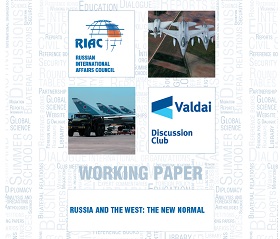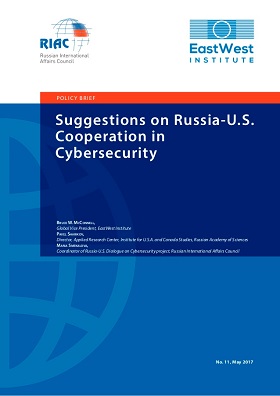The threat of terrorism and extremism will undoubtedly be among the priorities on the agenda of the upcoming NATO summit in Brussels. The organization’s members justly consider terrorism to be one of the most formidable challenges. Many of them have fallen victim to terrorist attacks. The threat is fueled by the crisis of statehood and conflicts in the Islamic world, as well as an unprecedented refugee crisis in Europe. The fight against terrorism has always been an important area of NATO-Russia partnership. Moscow is one of the most active security providers in countering terrorism, as well as one of the most attractive targets for extremists of every shade and hue. Russia’s support has played a significant role in ISAF operations in Afghanistan. The Russian Armed Forces are on the forward edge of the fight against ISIS. Together with its partners Russia uses OSCE and SCO mechanisms to restrain extremists in Central Asia. Russia is one of the OSCE’s weightiest partners in counterterrorism.
The threat of terrorism and extremism will undoubtedly be among the priorities on the agenda of the upcoming NATO summit in Brussels. The organization’s members justly consider terrorism to be one of the most formidable challenges. Many of them have fallen victim to terrorist attacks. The threat is fueled by the crisis of statehood and conflicts in the Islamic world, as well as an unprecedented refugee crisis in Europe. The fight against terrorism has always been an important area of NATO-Russia partnership. Moscow is one of the most active security providers in countering terrorism, as well as one of the most attractive targets for extremists of every shade and hue. Russia’s support has played a significant role in ISAF operations in Afghanistan. The Russian Armed Forces are on the forward edge of the fight against ISIS. Together with its partners Russia uses OSCE and SCO mechanisms to restrain extremists in Central Asia. Russia is one of the OSCE’s weightiest partners in counterterrorism.
Nevertheless, terrorism and extremism keep gaining momentum. A major military bloc whose aggregate defense spending exceeds $1 trillion a year, with 3.5 million military personnel, appears to be effectively helpless in protecting its citizens against terrorists. The extremist underground is expanding in Russia too. In short, OSCE member countries — the most powerful military nations — are hard put to keep the growing terrorist pressure in check. Why is that happening?
First, the antiterrorism efforts of Russia and Western countries are largely divided. The parties regard each other as a priority security threat. A significant share of their resources is aimed at mutual containment, not at fighting terrorism. What’s more, there is an obvious asymmetry in approaches within NATO. The most anti-Russia minded East European members are practically not affected by terrorism. Conversely, countries such as Germany and France, which have been subjected to a series of terrorist attacks, are far more open to cooperation with Russia even though they maintain a critical position on a number of issues. Terrorists take advantage of the divide between Russia and the West, expanding their activity in both areas.
Second, the parties have fundamentally different approaches toward assessing the sources of terrorism. They also have different views on the ongoing political processes in the Middle East. The idea that it is necessary to democratize the European periphery and countries of the Islamic world has long prevailed in the West. Democratization has been viewed as an essential result of the series of Arab Spring revolutions, as well as of a series of Western interventions in Islamic countries. However, in most cases democratization ended up either in civil wars or outright extremists coming to power or the need for a Western military presence and massive financial injections. Russia has categorically opposed intervention and enforced democratization. Russia’s priority has always been the preservation and consolidation of statehood. Viable statehood and full sovereignty make it possible to effectively stand up to extremists on the ground. Democratization in the Islamic world is a very special process. Universal patterns do not work here. It seems that Western capitals are beginning to realize this.
Third, Russia and the West have come up against a new quality of extremist activity. It is based on focused and extremely effective ideological campaign. Terrorist ranks are replenished both with people from poor countries and regions and citizens of quite prosperous European countries. Radical Islamism is emerging as a doctrine that is attractive to the masses regardless of their social status. As a result, it becomes impossible to deal with this problem only through the efforts of special services. One or several terrorist organizations may be eliminated. However, as long as their ideology remains attractive, new terrorist organizations will instantly appear in their place. This problem cannot be resolved through the efforts of special services alone. The most proactive efforts are required at the level of the education system, civil society and the media. On the side of the radicals is their growing ideological cohesion. On the side of Russia and the West is their growing ideological divide.
Fourth, the ideological effectiveness of extremists is augmented by the fundamentally new information and communication technology opportunities. Social media make it possible to target particular audiences for informational impact — by age, persuasions, habits, location, social status and many other characteristics. They also make it possible to control the masses, conduct viral indoctrination, mobilize victims of propaganda on short notice and recruit new terrorists. Extremists have seized initiative in the social media. At the same time Russia and the West lack coordinated approaches toward managing the digital environment. What’s more, in the West, Russia is portrayed as perhaps the biggest cyber threat. The Russia-West divide in the digital sphere strengthens extremists’ positions.
Fifth, NATO and the CSTO as two military alliances are ill-suited for countering new methods of extremist activity. This especially applies to NATO, which has still largely preserved its makeup from the Cold War era. The CSTO, with its focus on the Central Asian vector, is better equipped to work on the antiterrorism track. However, this also requires enormous efforts to adapt to rapidly changing technological, informational and social realities. The situation is complicated by the lack of practical collaboration between NATO and the CSTO.
Sixth, there are new institutional forms of extremist activity. It is built on a network principle. In particular, ISIS has turned into a kind of a terrorist franchise, making it easier to adapt to specific local conditions. As a result, radical Islamism is gaining momentum in such different regions as North Africa, the Middle East, Europe, the North and South Caucasus, Central Asia, South Asia and Southeast Asia, among others. Cumbersome military-political blocs and international organizations are lagging behind in the fight against such networks.
What could be done under these circumstances?
First, the fight against extremism must be singled out as a separate “basket,” separating terrorism from other areas of cooperation between Russia and the West. Otherwise, disagreements on a wide range of issues in our relations will hinder effective collaboration in the fight against a shared threat.
Second, mechanisms need to be worked out and activated to control the digital space in fighting extremism. This work is already under way in cyberspace at the level of special services. However, it requires the involvement of a wider scope of participants, including private IT companies.
Third, online projects should be launched at the level of NGOs, educational institutions and think tanks with the aim of countering extremism. Unlike the official level, cooperation in these sectors is far less connected to political differences and so the speed and quality of collaboration at this level can be fundamentally different. In addition, the network structure of countering extremism can prove effective, considering the network structure of extremist organizations themselves. It is important to develop methodologies for this work and use the best available practices in the field. At the government level, there is a need for resources and financial support.
Finally, last but not least, there is a need to strengthen the OSCE financially and politically as a European security institution at least at the level of countering extremism. As long as Europe does not have an inclusive security institution, it will be hard to build an effective system to fight new threats and challenges. However, this does not preclude cooperation between Russia and NATO, the CSTO and NATO, Russia and the EU, and so on.
Ivan Timofeev is Programme Director of the Valdai Discussion Club, Director of Programs at Russian International Affairs Council (RIAC).
First published in (Valdai Discussion Club)








